[CA5] Large and Fast; Exploiting Memory Hierarchy
- Introduction
- DRAM Organization & Operation
- Memory Hierarchy: Principle of Locality
- Caches
- Cache Block Size
- Main Memory & Caches
- Write Policies
- Cache Performance
- Associative Caches
- Multilevel Caches
- Cache’s Interaction with Advanced CPUs and Software
Introduction
memory hierarchy : A structure that uses multiple levels of memories. ; as the distance from the processor increases, the size of the memories and the access time both increase while the cost per bit decreases.
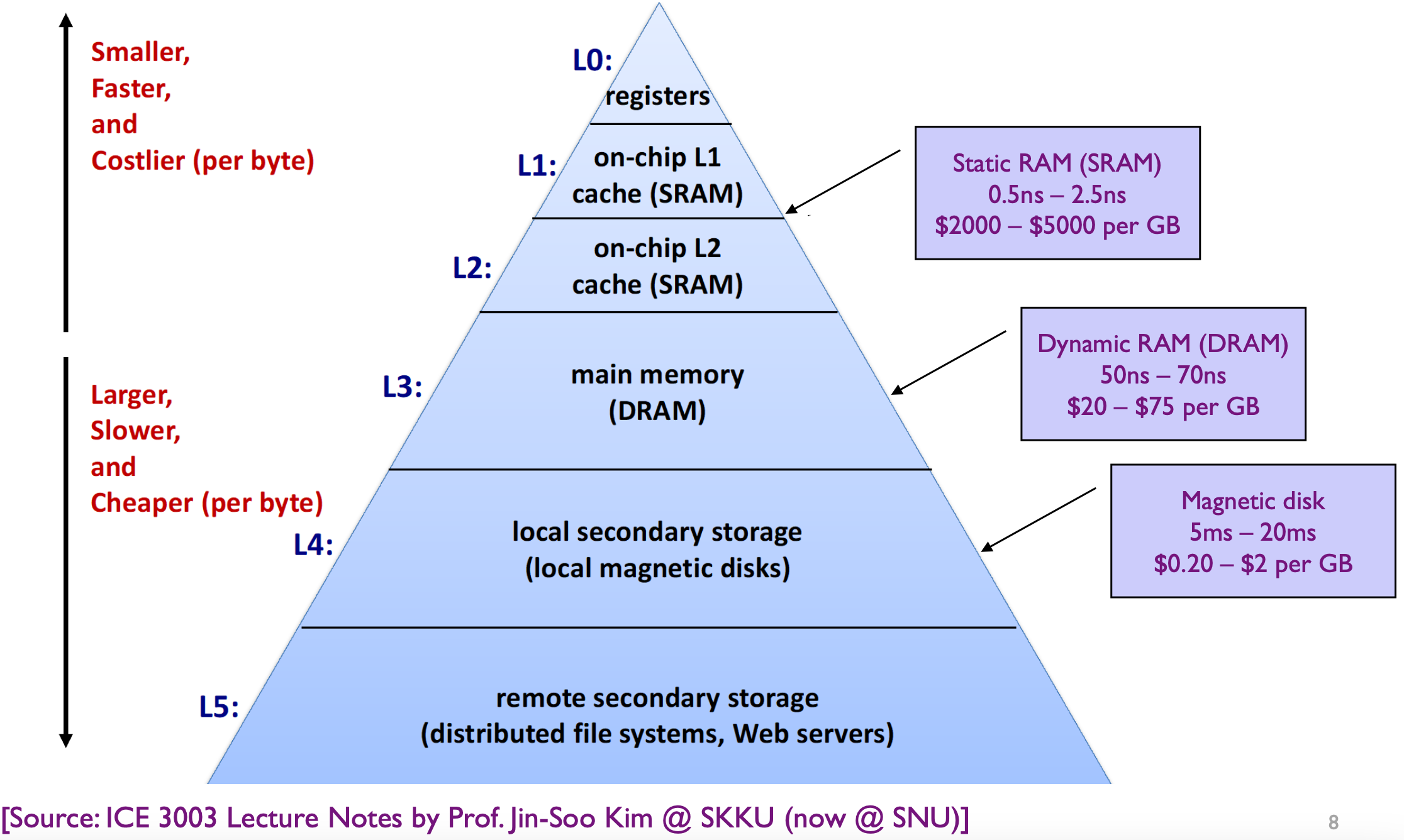
DRAM Organization & Operation
DRAM configuration
- strobe: A signal used to time reading that is output together with the data.
- Block(line): Unit of data presented in caches.
Note: CPU register ‘line’ == word (4B)
- Large capacity
- Arranged as 2D matrix
- Narrow data interface: 1-16 bits (x1, x4, x8, x16)
- Cheap packages => Few bus pins.
- Pins are expensive.
- Narrow address interface
- Multiplexed address strobe lines: row and column address
- Signaled by RAS# and CAS#, respectively. (RAS: Row Address Strobe, CAS: Column Address Strobe)
DRAM Organization
- DRAM: set of banks
- bank: independent memory request processing.
- # banks == parallelism degree.
- Row buffer: bank-private cache area. (=> faster than DRAMs)
- 4-16kB in size
- Shared by all CPU cores
- (cf. Rank = 4-16 banks)
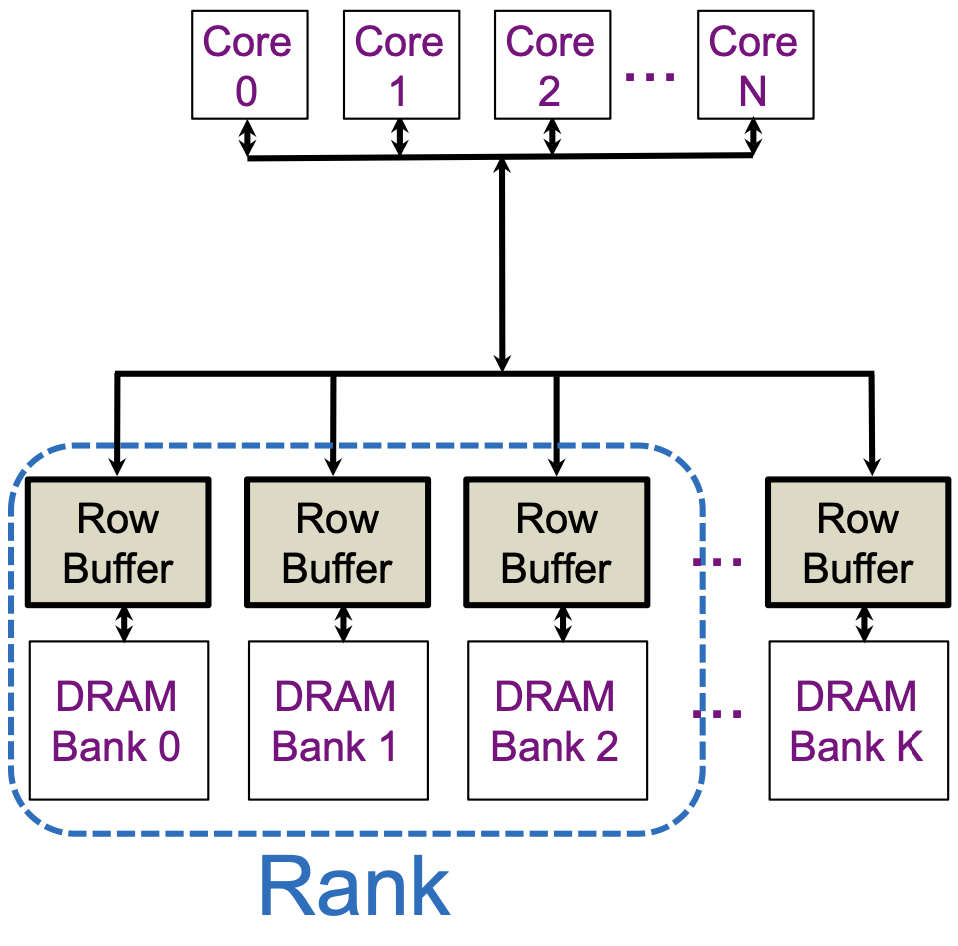
“각 bank에 동시에 access가 가능하면, spreading sequential data @ multiple banks is better.”
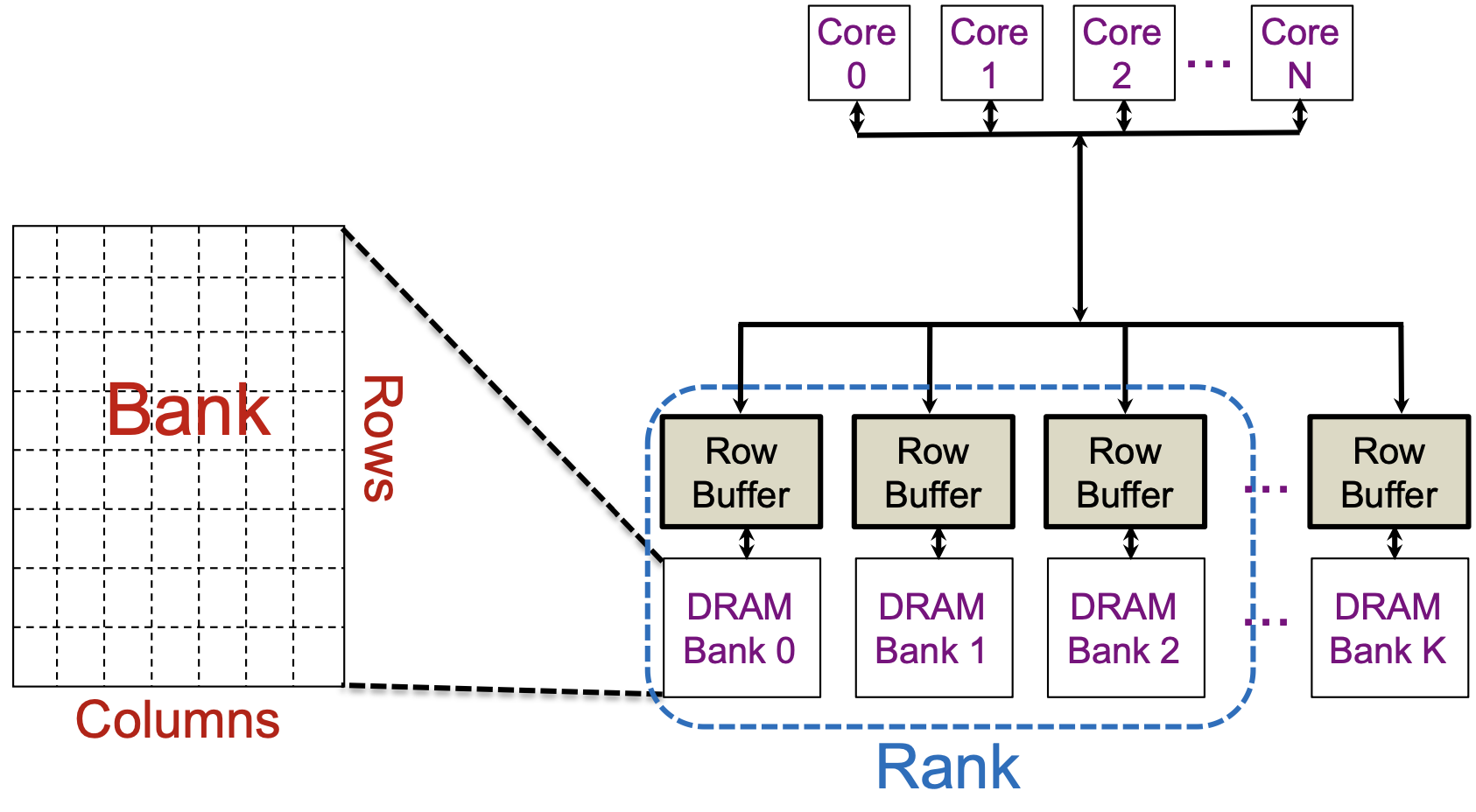
DRAM Operations
(In? Column-first scheduling)
1) row-hit access 2) row-miss access
DRAM access scenario
- Three column reads to row 0, one col read to row 1.
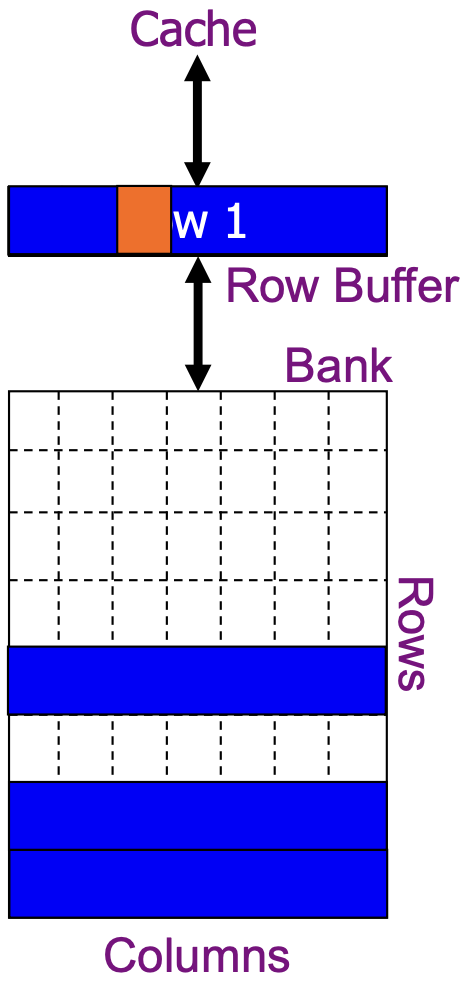
Access scheduling sequence
| # | RAS#? | CAS#? | Result |
|---|---|---|---|
| 1 | 0 | 0 | row-miss |
| 2 | 0 | 1 | row-hit |
| 3 | 1 | 2 | row-miss |
| 4 | 1 | 2 | row-miss |
Explanation
-
- Row miss: ACT, row activation
- We should have one miss at the initial data accesses.
- Right after the miss, the corresponding data portion is filled into the buffer.
- Here, we accessed the data of row 1 of the DRAM data for the first time.
- Row miss: ACT, row activation
-
- Row hit: We already had an ACT in access to row0 col0. Thus, the row buffer stores the Row0, which then we can use to access it later.
-
- Row miss: ACT, because we haven’t loaded the Row1’s data into the buffer.
- Then we fill ? Buffer
- Row miss: ACT, because we haven’t loaded the Row1’s data into the buffer.
-
- Row miss: “ACT”. Why?? (probably because the tag bit differs!)
In case of row-miss, the row buffer gets the data from the DRAM.
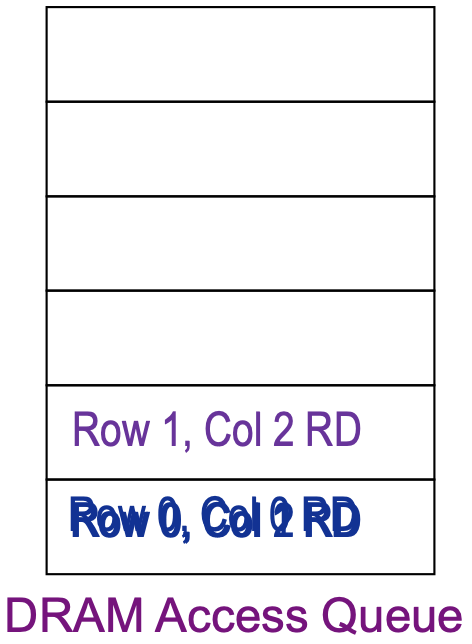
Memory Hierarchy: Principle of Locality
(If a data location is referenced,)
terms:
-
- temporal locality
- The principle stating that if a location is referenced then it will tend to be referenced again soon.
-
- spatial locality
- The locality principle stating that if a data location is
Temporal Locality
Recently accessed items are likely to be accessed again soon.
e.g. looping variables (induction variables), instructions in a loop
Spatial Locality
Items near recently accessed one are likely to be referenced/accessed soon.
e.g. sequential instruction accesses (e.g. 4 bytes array), array data
Taking advantage of this,
- Store everything on disk
- Copy recently accessed (and nearby - spatial locality) items from disk to smaller DRAM memory
- main memory
- Copy more recently accessed (and nearby) items from DRAM to smaller SRAM memory (- temporal locality?)
- Cache memory attached to CPU
- memory hierarchy
Access Hits and Misses
- Block(line): Unit of data presented in caches.
- Hit: If accessed data is present in upper level. (Memory accesses found in a level of the memory hierarchy.)
- Hit ratio: hits/accesss.
- Miss: If accessed data is absent in the upper level. (Memory accesses not found in a level of the memory hierarchy.)
- => Copy the block from the lower level
- (=> Regenerate the access by copying it to the upper level.(?))
- Time taken: miss penalty: access to lower + access to upper
- Miss ratio: misses/accesses
- = 1 - hit ratio
- => Copy the block from the lower level
- Then accessed data supplied from upper level
Caches
Cache memory: The level of the memory hierarchy closest to the CPU (except for the register(?))
Given accesses, we have 2 Questions:
- Where do we look?
- How do we know the presense of the data?
Cache organization
- memory hierarchy
스스로 정리한 내용 + Tag array + Data Array
- Address composition (of fields)
- tag
- (cache) index
- block offset
- word-byte offset.
###

.png)